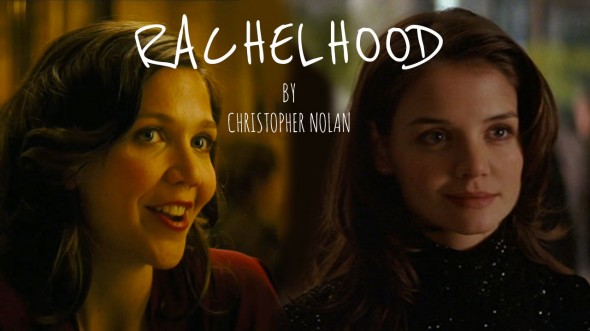Boyhood, as you’ve undoubtedly heard by now, is a remarkable film that uses the same set of actors over 12 years to tell a touching coming-of-age story. This is both an incredible technical and artistic achievement, and the movie deserves all of the praise that’s been heaped upon it.
But isn’t it also impressive that when the opposite happens–when different actors play the same character–we are so readily accepting of this? That seeing a character’s appearance change from movie to movie, or within the same movie, doesn’t shatter our suspension of disbelief?
To illustrate this, I cut together a parody of the Boyhood trailer using Katie Holmes and Maggie Gyllenhaal, who both played the character Rachel Dawes in Christopher Nolan’s first two Batman movies. This raised a few eyebrows at the time, and may have bothered some people a bit, but the vast majority of us barely gave it any thought. Isn’t that remarkable?
I see this phenomenon as a great example of the power of the artform to suspend an audience’s disbelief and get them to accept things at something other than face value. In many ways, we treat the movie screen as a perfectly transparent window into a different world, particularly when a movie purports itself to be “gritty” and “realistic,” as opposed to abstract or cartoonish. When we see Batman punch a guy in the face, we register that as an actual punch to the face, not as a carefully choreographed stunt. When we see the Batmobile crush a police car, we register that as actual car-on-car violence, not as a collection of models and computer graphics arranged to depict a crash.
But when we see two different actors play the same character, as we do with Rachel Dawes in The Dark Knight, we think little of it. The characters in the movie think nothing of it. No one cares. Thanks to the power of cinematic persuasion, we suspend our disbelief and move on.
If this is the case–that we’re able to accept a large amount of latitude in the change of appearances of individual characters while still accepting them as the same characters–then why are we so impressed with Boyhood’s achievement of using the same actors to portray all of the characters? It does demands less suspension of disbelief, in the same way that CGI Caesar in the modern Planet of the Apes movies demands less suspension of disbelief than his suit-and-mask ape predecessors.
But leaving it at that reduces Boyhood‘s achievement to a mere “special effect,” which feels inadequate. Boyhood is an unusual movie in that its meta-narrative, which revolves heavily around the casting continuity “special effect,” is almost equally as important as the narrative itself. When you go to see Boyhood, you’re not just watching Mason grow up on screen. You’re also watching actor and actual human being Ellar Coltrane grow up. Clearly, nothing of that sort is going on in the Batman movies; no one shows up at the multiplex for a meta-narrative of an actor struggling to find her place in a sprawling, male-dominated superhero epic.
All that is to say that Boyhood is a singular, unique achievement in filmmaking and storytelling, rather than some sort of advancement in the technical craft of filmmaking that can be repeated to lessen the audience’s need to suspend disbelief. Actor-swapping and old-age makeup haven’t been made obsolete or any more undesirable than they were to begin with. Audiences won’t revolt over the next casting change in a movie franchise based on some new standard set by Boyhood. Setting Boyhood and the Nolan Batman movies side-by-side was just my clever way of making this point while having some fun at the same time.

